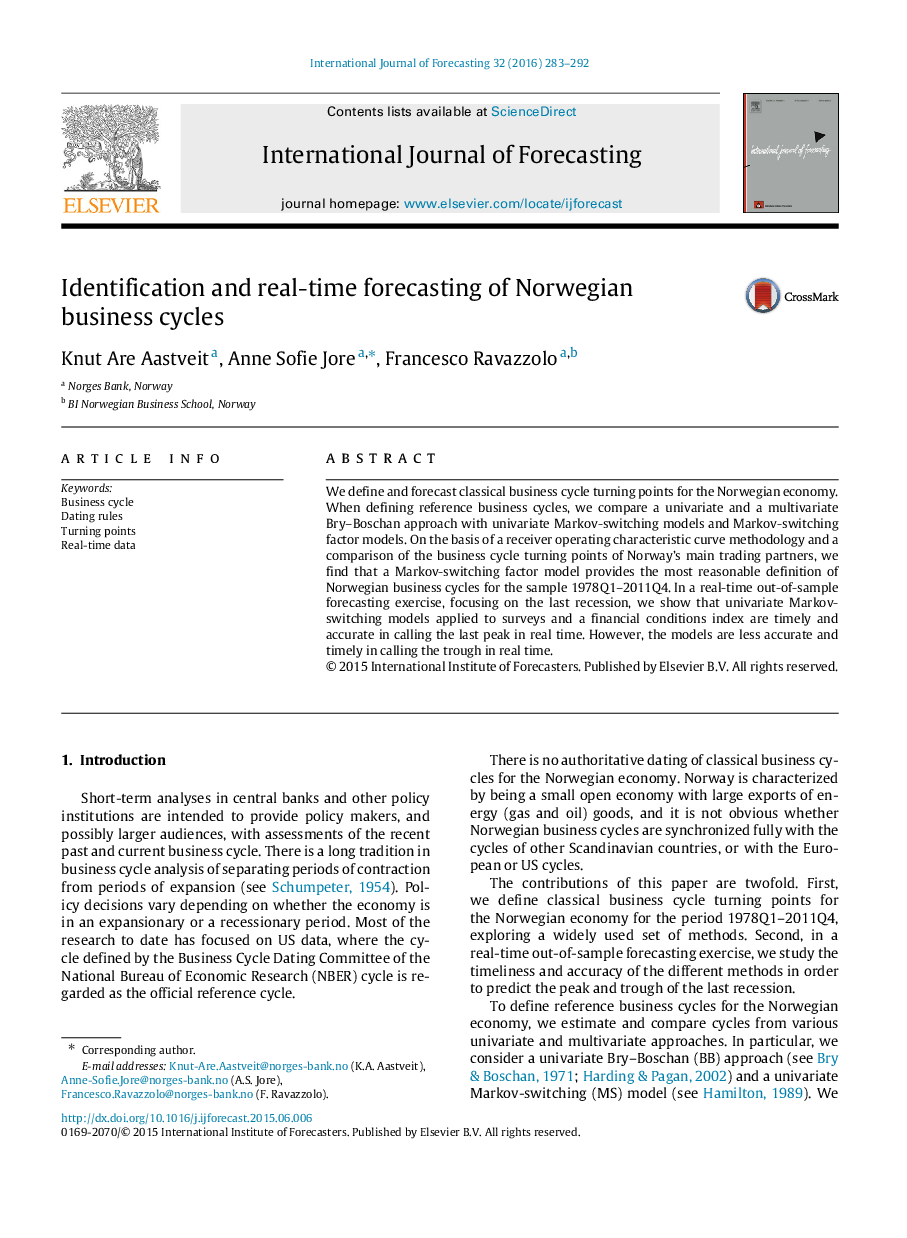| Article ID | Journal | Published Year | Pages | File Type |
|---|---|---|---|---|
| 998035 | International Journal of Forecasting | 2016 | 10 Pages |
We define and forecast classical business cycle turning points for the Norwegian economy. When defining reference business cycles, we compare a univariate and a multivariate Bry–Boschan approach with univariate Markov-switching models and Markov-switching factor models. On the basis of a receiver operating characteristic curve methodology and a comparison of the business cycle turning points of Norway’s main trading partners, we find that a Markov-switching factor model provides the most reasonable definition of Norwegian business cycles for the sample 1978Q1–2011Q4. In a real-time out-of-sample forecasting exercise, focusing on the last recession, we show that univariate Markov-switching models applied to surveys and a financial conditions index are timely and accurate in calling the last peak in real time. However, the models are less accurate and timely in calling the trough in real time.
